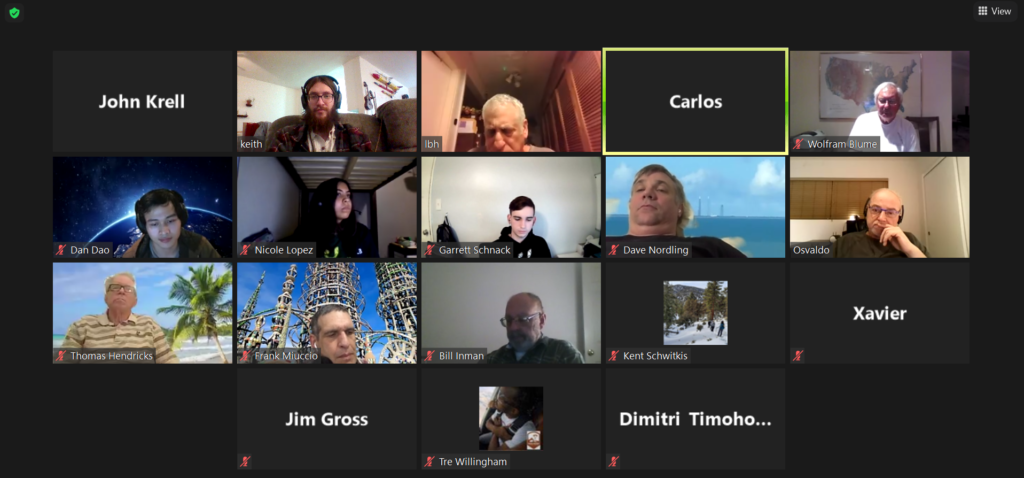by Dave Nordling, Reaction Research Society
The society held a launch event at the Mojave Test Area on June 19th. With many people having other plans, we were sparsely attended but able to get a few things done. The winds were very low and sun was very hot that day (105 F) making it a challenge to operate at the site, but with each other’s help we managed. I was the pyrotechnic operator in charge that day. I had intended to bring my hybrid rocket for this event but wasn’t able to complete the rocket in time. It would be Bill Inman’s Solar Cat, a pair of micrograin alphas and witnessing the UCLA Prometheus team launch their hybrid rocket after getting a replacement nozzle from the motor supplier.

BILL INMAN’S SOLAR CAT
Bill Inman and Jon Wells made the journey from Nevada to demonstrate a new sun tracking system improvement to better automate the solar heating process with the parabolic mirror. Unfortunately, there were several problems with the installation that ultimately went unresolved for that day. A series of benchtop tests would be needed before bringing his combined solar collector and rail launcher back to the MTA for a launch.
Bill had also expressed concerns about vibration from over-the-road travel taking its toll on the structure. He was already considering a major rebuild of his parabolic collector with a wider aperture. The next iteration of the Solar Cat is also supposed to be larger in diameter and capacity. With the Solar Cat work at a halt, Bill and Jon came over to assist Manny Marquez and myself with the loading of a pair of RRS standard alphas.
A PAIR OF ALPHAS
Osvaldo Tarditti was unable to attend this event, but he did measure out the zinc and sulfur in separate pre-weighed bags and provided a clean pair of alpha parts complete with the nozzles and well-painted, turned and recovered aluminum nosecones. For our new members, the society likes to give the experience of micrograin rocketry. Manny, Bill and Jon would have their first experience loading and firing an alpha that day. The society hasn’t launched many micrograin rockets since before the pandemic.


Manny was a big help getting the equipment out and running. I was able to train him in the old RRS tradition of micrograin rocketry. With only two rockets, we gave the loading duties to Bill and Jon. For their handling of the dirty task of slowly loading the propellant tubes, they each got the honor of finishing the build and preparing for launch.


I was able to teach Bill, Jon and Manny the safe procedure for hooking up back to the control box in the blockhouse. With a well rehearsed procedure including air-and-road checks, we notified FAR in advance of firing our two alphas for that day to prevent anyone from wandering downrange before we fired.

We each got a good lesson in the value of teamwork and a renewed respect for the heat of summer. The micrograin rocket is a simple but powerful initiation into experimental rocketry.

Our next event has not been scheduled but we do plan to return to the MTA in July 2021. For members interested in planning the next event at the MTA, contact the RRS president and the executive council.
president@rrs.org






















